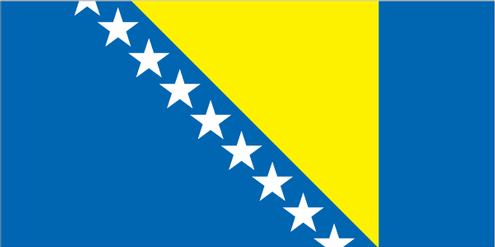- Home Exchange
- Vacation Rentals
- B&B
Choose from over 15 000 listings worldwide! Join our worldwide network today!
Subscribe to Newsletter
Enter your email address below and click GO
Travel to Bosnia and HerzegovinaTravel warning is issued for traveling to Bosnia and Herzegovina. For more information please visit U.S. Department of State. Browse listings of Home Exchange, Vacation Rentals , Homestay, B&B,(furnished apartments, villas, cottages, condos, farmhouses and other types of accommodations) of Bosnia and Herzegovina:
Last Minute Tips Before you Travel to Bosnia and Herzegovina
Must See - Properties on UNESCO World Heritage List
Bosnia and HerzegovinaLocation Capital Population Regions Largest cities of Bosnia and Herzegovina Climate Ethnic groups Religions Languages Government type Background Map of Bosnia and Herzegovina Bosnia and Herzegovina Travel and Accommodation – Your Tips for TravelersIf you would like to share your experiences of traveling to Bosnia and Herzegovina or to any other country, please send us your article and we will gladly post it at this website. Source: Central Intelligence Agency. Disclaimer: Although we have tried to make the information on this website as accurate as possible, some of the facts may not be accurate, or may have recently changed. We do not accept any responsibility for any loss, injury or inconvenience suffered by anyone resulting from this information. You should verify important information with the relevant authorities before traveling. |
Testimonials
Hi there from sunny Brunswick Heads, Australia
Have had a successful change to Alaska in '09 through your site and have another arranged for Nova Scotia later this year. Plus I am hosting someone from Reunion Island in April - all through your free site. Excellent!
More testimonialsnew members
-
Australia, Bangalow
Home Exchange -
Spain, Costa Del Silencio
Home Exchange -
Netherlands, Amsterdam
Home Exchange -
Israel, Jerusalem
Vacation Rentals -
United States, New York City
Home Exchange -
United States, Sevierville
Home Exchange -
United States, New York
Home Exchange -
Poland, Krakow
Home Exchange -
United States, San Luis Obispo
Home Exchange -
Spain, TARRAGONA
Home Exchange -
United States, NEW YORK
Home Exchange -
Italy, Valmozzola, Parma
Home Exchange -
Italy, Valmozzola, Parma
Vacation Rentals -
United States, Lake Forest Park
Home Exchange -
Portugal, Colares
Home Exchange -
United States, Laurel Spgs
Home Exchange -
Australia, Drouin
Home Exchange -
Israel, Petah Tiqva
Home Exchange -
Costa Rica, Cahuita / Puerto Viejo
Home Exchange -
United States, Bonita Springs
Home Exchange -
United States, New York
Home Exchange -
United States, Riverdale
Home Exchange -
Australia, Moss Vale
Home Exchange -
Croatia (Hrvatska), Split
Home Exchange -
Australia, DROUIN
Home Exchange -
United States, Zionsville
Home Exchange -
United States, San Francisco
Home Exchange -
Canada, Coquitlam
Homestay -
Canada, Panorama
Home Exchange -
Romania, Bucharest
Home Exchange
 The triangle approximates the shape of the country and its three points stand for the constituent peoples - Bosniaks, Croats, and Serbs; the stars represent Europe and are meant to be continuous (thus the half stars at top and bottom); the colors (white, blue, and yellow) are often associated with neutrality and peace, and traditionally are linked with Bosnia,
The triangle approximates the shape of the country and its three points stand for the constituent peoples - Bosniaks, Croats, and Serbs; the stars represent Europe and are meant to be continuous (thus the half stars at top and bottom); the colors (white, blue, and yellow) are often associated with neutrality and peace, and traditionally are linked with Bosnia,